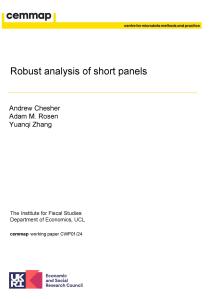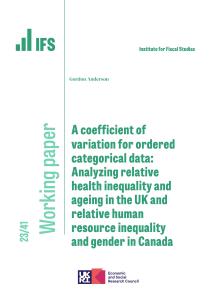If consumers have finite lives, the aggregate consumption growth equation is affected by entries and exits (births and deaths). We use two-and three-period overlapping-generations (OLG) models to show that entries and exits produce a relationship between aggregate consumption growth and the interest rate that is fundamentally different from the individual Euler equation for consumption. If aggregate data are used to estimate an `aggregate' Euler equation, under plausible assumptions we show that the estimate of the elasticity of intertemporal substitution is downward biased and that consumption growth exhibits excess sensitivity to labor income.
Authors

CPP Co-Director
Orazio is an International Research Fellow at the IFS, a Professor at Yale and a Research Associate at the National Bureau of Economic Research.

Research Associate University of Padua
Guglielmo is a Research Associate at the IFS and Professor in the Department of Economics at the Faculty of Statistics, Padua University.
Journal article details
- Publisher
- Wiley
- Issue
- January 1995
Suggested citation
Attanasio, O and Weber, G. (1995). 'On the Aggregation of Euler Equations for Consumption in Simple Overlapping-Generations Models' (1995)
More from IFS
Understand this issue

Gender norms, violence and adolescent girls’ trajectories: Evidence from India
24 October 2022

Public investment: what you need to know
25 April 2024

The £600 billion problem awaiting the next government
25 April 2024
Policy analysis

ABC of SV: Limited Information Likelihood Inference in Stochastic Volatility Jump-Diffusion Models
We develop novel methods for estimation and filtering of continuous-time models with stochastic volatility and jumps using so-called Approximate Bayesian Compu- tation which build likelihoods based on limited information.
12 August 2014

Assessing the economic benefits of education: reconciling microeconomic and macroeconomic approaches
This CAYT report discusses the strengths and limitations of several approaches to assessing the effect of education on productivity.
14 March 2013

Misreported schooling, multiple measures and returns to educational qualifications
We provide a number of contributions of policy, practical and methodological interest to the study of the returns to educational qualifications in the presence of misreporting.
1 February 2012
Academic research

Understanding Society: minimising selection biases in data collection using mobile apps
2 February 2024

Robust analysis of short panels
8 January 2024

A coefficient of variation for ordered categorical data: Analyzing relative health inequality and ageing in the UK and relative human resource inequality and gender in Canada
21 December 2023